

Project «Voices of Jewish settlements. Vitebsk region.»פיתוח קשרי התרבות בין העמים של ישראל ובלרוס
|
|---|
Website search |
|
MainNew publicationsContactsSite mapVitebsk regionMogilev regionMinsk regionArkady Shulman
|
JEWS IN DISNA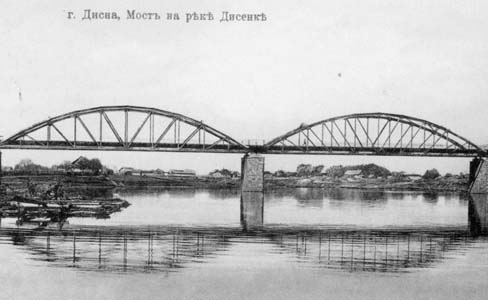 Bridge across the Disna.
Bridge across the Disna.Photo taken at the beginning of the 20th century. 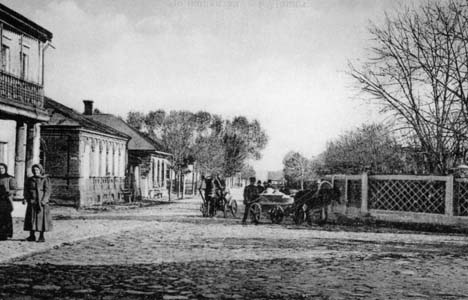 Zamkovaya Street.
Zamkovaya Street. Photo taken at the beginning of the 20th century. The first Jews appeared in our settlement in 1044 – 1101. Later, in the 14th century, Jews, who were strongly persecuted in Western Europe, found shelter in the Great Duchy of Lithuania, which was rather tolerant to different ethnicities and religions. The first Jewish communities in Belarus appeared in Brest and Grodno. The first Jews arrived in Disna from Polotsk. According to archive data, mass population of Disna by Jews started after a fire, which destroyed a great part of the settlement in 1700. Gradually the percentage of the Jewish population was growing, which was positively reflected on the economic situation in the town. According to archive data, in 1858 the population of Disna was 5183 people, 2579 of them – Jewish; in 1868 the total population constituted 6562 people, with 3662 – Jews. In 1893 the population was 8988 people, including 4307 – Jewish. The Jewish population was mainly represented by merchants and craftsmen. World War I and the Civil War reflected negatively on the economic development of the settlement. A considerable number of men, including Jews, were drafted to the army. Many of them did not come back. Some of them were killed in the wars, while some spread all over Russia. However, the worst Disna ever saw was during World War II. The ghetto was created in October 1941. Polotskaya Street was surrounded with barbed wire. There were 8-10 families living in each house, sometimes even up to 15, depending on the size of a house. The ghetto residents were allowed to take only the most necessary belongings. All the houses were looted by Nazi policemen. It was strictly forbidden to leave the ghetto. In March 1942 twenty-three ghetto residents were shot for no reason. It was said they were activists arranging a riot in the ghetto. Some of the ghetto residents managed to escape, but they were very few. 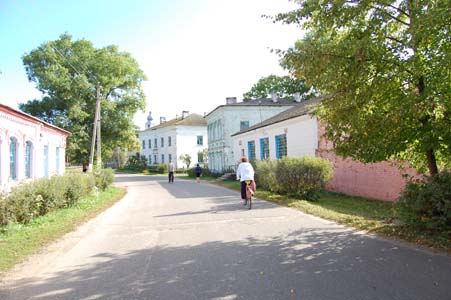 Disna. Photo taken in 2009.
Disna. Photo taken in 2009.
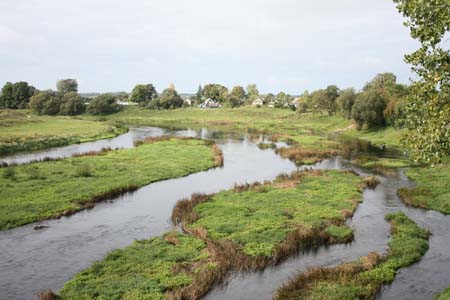 The Disna River.
The Disna River.
However, the worst day was yet to come. It was July 14th 1942. The ghetto was surrounded by policemen. Several Jews were made to dig up ditches on a wasteland not far from the ghetto. There were two ditches, each 4 meters deep, 5 meters wide and 60 meters long. Then groups of 10 people were brought and shot. Some people, falling into the ditches, were still alive. The death conveyor worked all day long. The air was saturated with crying and screaming. It is believed that 3800 people were killed on that day. 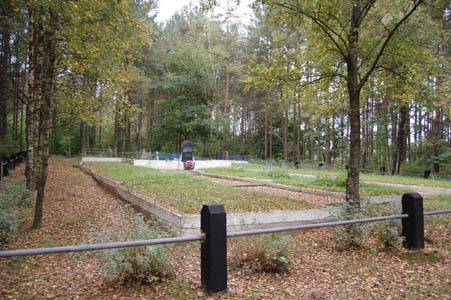 Disna. Memorial on the execution site.
Disna. Memorial on the execution site.
Seventeen Jews were left alive – they were craftsmen: tailors, shoemakers, watchmakers and other specialists. These people were made to work for Germans and executed in November 1943. On July 4th 1944 Disna was liberated by the Soviet Army. Very few native residents and not a single Jew was left in the town. A year later the population of Disna was not more than 800 residents, including several Jews who were demobilized from the Army. Today the population of Disna constitutes less than 2000 people, 800 of them – retired. There are no Jews left. All the old Jews have died. They were buried next to the graves of the Jews, executed by fascists in 1942. The rest of them immigrated to Israel. 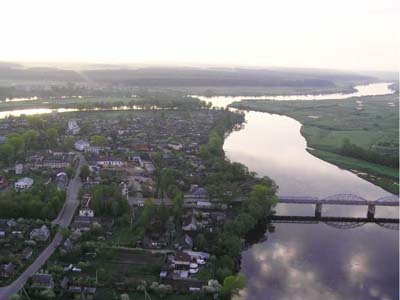 Disna. View from above.
Disna. View from above.
I am a teacher and I do historical research. I am soon turning 75. When I arrived in Disna I talked to many witnesses of the execution of Jews and did research on the history of the town. Fadey Shimukovich
|
|||
|
|
Jewish settlements in Vitebsk regionVitebsk • Albrehtovo • Babinovichi • Baran • Bayevo • Begoml • Beshenkovichi • Bocheikovo • Bogushevsk • Borkovichi • Braslav • Bychiha • Chashniki • Disna • Dobromysli • Dokshitsy • Druya • Dubrovno • Glubokoye • Gorodok • Kamen • Kohanovo • Kolyshki • Kopys • Krasnopolie • Kublichi • Lepel • Liady • Liozno • Lukoml • Luzhki • Lyntupy • Miory • Obol • Oboltsy • Orsha • Osintorf • Ostrovno • Parafianovo • Plissa • Polotsk • Prozorki • Senno • Sharkovshina • Shumilino • Sirotino • Slaveni• Smolyany • Surazh • Tolochin • Ulla • Verhnedvinsk • Vidzy • Volyntsy • Yanovichi • Yezerishe • Zhary • Ziabki • |
Main |
New publications |
Contacts |
Site map |
Vitebsk region |
Mogilev region |
Minsk region |